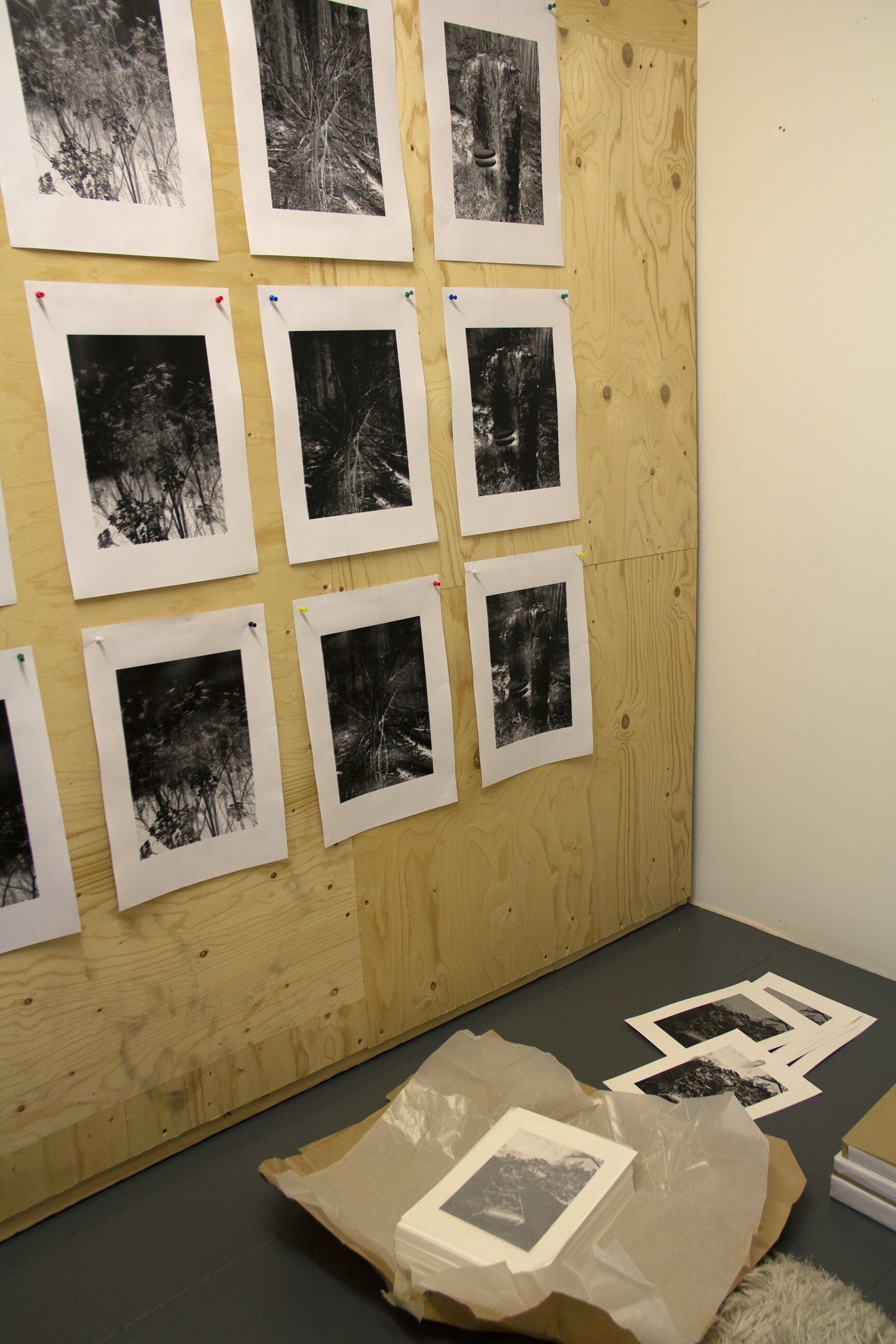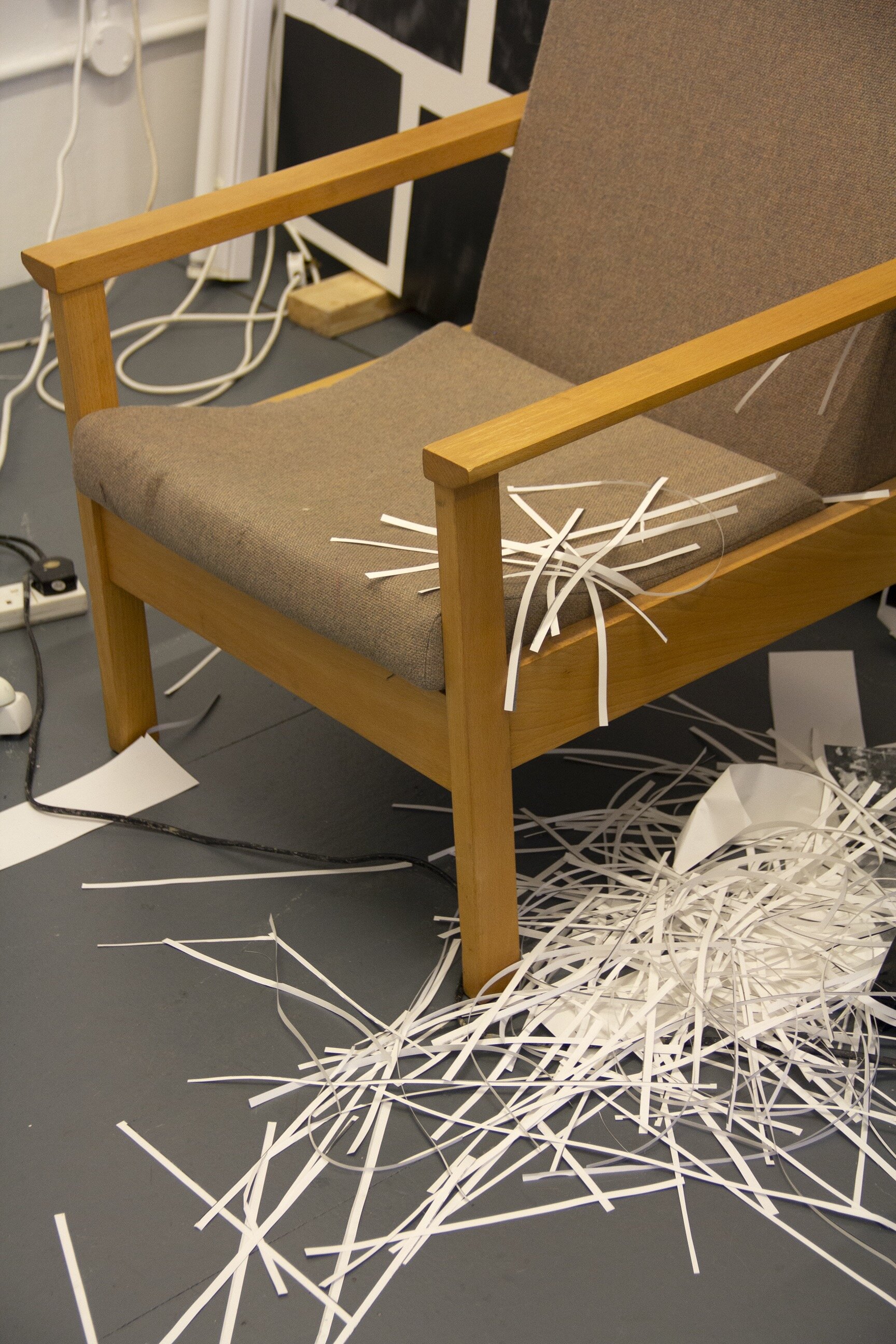Francesca Gavin in conversation with Nicholas Cheveldave
To mark the release of our limited edition print, Particular Ideas invited writer, editor and curator Francesca Gavin to speak to Nicholas Cheveldave about his work, found imagery, ‘Kodak moments’ and John Waters.
Over the last few years you’ve emerged as an exciting name, with presentations of your work at Emalin gallery and Liste Art Fair, alongside numerous project spaces in Athens, Norway and London. Your installations, collages, book projects, sound pieces and multimedia objects question the power structures of capitalism and gentrification. Tell me about your process. What sparks your work?
For me, an idea comes from multiple places, over time. I’ve always liked to walk around cities and green spaces. You begin to see patterns – construction sites, objects and things either left by people or placed there through city planning. City advertising hasn’t yet been targeted exactly to your search interests. I generally read a lot of fiction and theory and that also helps to get an idea going. The images tend to follow after that.
You work in a multiplicity of mediums. What do you find interesting about that breadth and what do you feel connects your approach?
I’ve always liked to switch up the ways I work. In school, I had the idea of concept first, medium second beat into my brain. If I’m not interested while making something, it’s time to find a new approach. Materials also help to shape concepts and meaning.
Collage is something that is central to what you create.
I’ve always loved looking at and listening to collage. It’s also a very accessible medium. You just need scissors and glue. I guess I’ve been using collage since I was a kid, gluing macaroni to everything. Once you’ve collected the materials, it’s a fast assemblage. I tend to make a lot of A3 and A4 collages as compositional studies for bigger works.
Where are you finding your imagery? Are you taking photos or only finding things online or printed ephemera?
I’ve been collecting images and 4 x 6 photos for a while. When I lived in Vancouver, I used to go religiously on a Sunday to the flea market and buy old family photos, Polaroids and still lives. Images of empty homes taken on film to document rental properties for advertising in newspapers or pin-up boards (before Craigslist, Gumtree and digital photography) were the best. They were usually in poor focus and compositionally weird; DIY and very far away from professional advertising compositions. Something about that kind of image seemed very real or believable to me. While at Goldsmiths I began collecting bulk images from the internet – I probably have about 10,000 now. Mostly of domestic scenes like home interiors, gardens, renovations and domestic objects. I decontextualise the image to crop out any people that are in frame and focus on the objects in their domestic spaces.
Domestic space is a recurring theme.
The building images are often of uninhabitable spaces or in a phase of restoration. Places like attics that are considered ugly and hidden away. When I focus on material like pink insulation, they become bodily and a bit grotesque. The renovation images are somehow sentimental to me, it reminds me of the Western idea of the harder you work the more you can achieve. Often these renovation projects stay in a space of transition for many years.
Is your aim to critique on capitalism and urban space?
My work is critical, but it appropriates a lot of rhetoric and design from how these kinds of spaces are advertised and sold to a public. How the idea of the new is continuously rebranded and absorbed.
Some of your more recent works have focused on nature and flowers. What do those references mean for you?
I grew up in Canada in the Pacific Northwest rainforest, and now live in London. I think about being in nature often, and this year has been particularly barren for it.
Is the digital nature of contemporary images and their dissemination important to you?
Yes. The ability to take as many images as you like has somehow ruined spontaneity. Most images have now become staged, composites or variations of many moments put into one. Personal photography with phones is produced exclusively for an audience. It’s like a big ‘Kodak moment’. When they originally had the ‘Kodak Scenic Spot’ campaign in the 1920s and 1930s, you would stand on the Kodak emblem and have a friend shoot your picture looking over, say, the Grand Canyon. The same photo would be taken over and over again with different people. Social image formalism.
There is a real physicality to your work.
The work is always handmade. I like the final piece to have gone through a process. I recently bought an A3 printer for the studio so I can now edit and print there. For the series of monochromatic works I’ve been making recently, I have been printing, cutting, then pasting all the pages onto canvas in the studio. Newspapers were a big source for a while. I like using materials that are widely available and accessible to everyone. When I was a kid I loved John Waters’s films and especially Serial Mom. The character Beverly Sutphin made collages out of newspapers and fashion magazines. It was darkly taking the piss out of suburban life, and the ins and outs of recycling.
Tell me about your edition for Particular Ideas.
The edition I’ve made with Particular Ideas is a monochromatic image of a garden scene, with a lawn lounger sitting invitingly on the grass. The image has been inverted to reference the photographic negative, a heavily nostalgic medium. Now this aesthetic is closely associated with app filters, as a way to make something look old. We’ve used the silkscreen process to get the dots per inch of old school newspaper printing. Each print is finished with a bit of glitter impasto, finger painted onto the surface. I’ve always liked to use this kind of layering, so the viewer is taken back out of the photograph’s depth and illusion to focus on the surface.
What are some of your influences and inspirations? You studied under Mark Leckey at Goldsmiths, which I assume fed into what you do in some way?
Yes, I studied at Goldsmiths with Mark. He was quite honest and I respect his approach to teaching. I’ve always loved Lutz Bacher. Arthur Jafa, Dan Graham. I’ve been listening to a lot of William Basinski’s records during lockdown, I saw him play his tape loops in a cathedral in London a few years ago, it was really powerful. I’ve been thinking about the way his use of repetition and disintegration takes an appropriated and recognisable piece of music and slowly breaks it down into repeating fractions until its origin becomes unrecognisable. There is an exchange of authorship and memory.
See Nicholas Cheveldave’s edition for Particular Ideas here and find more from Francesca Gavin at www.francescagavin.com and @roughversion.
All images Nicholas Cheveldave studio, courtesy the artist.






